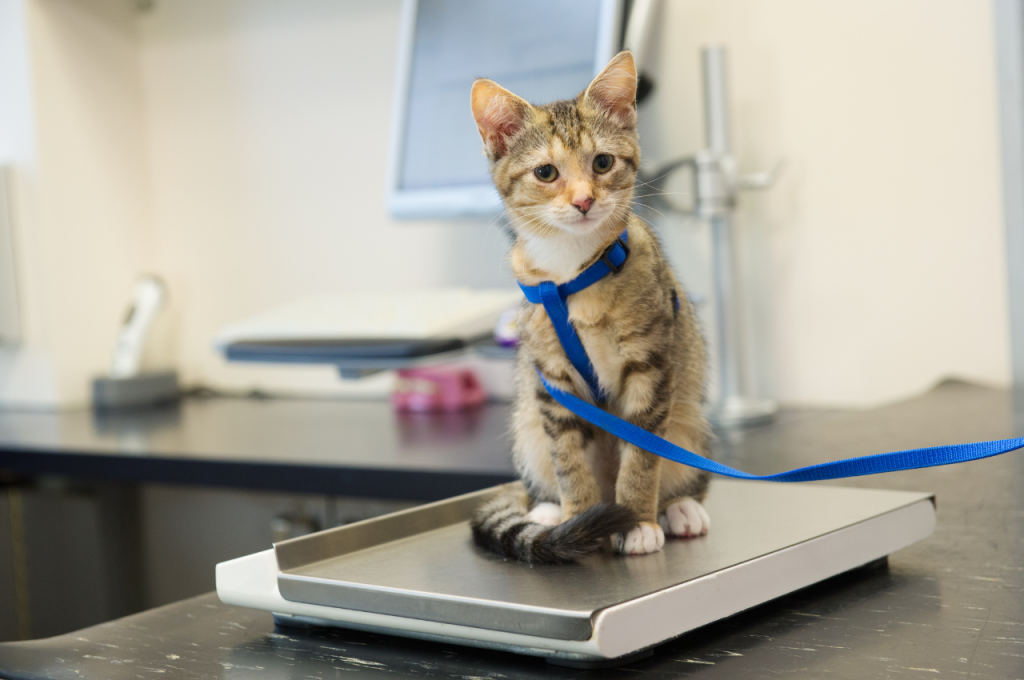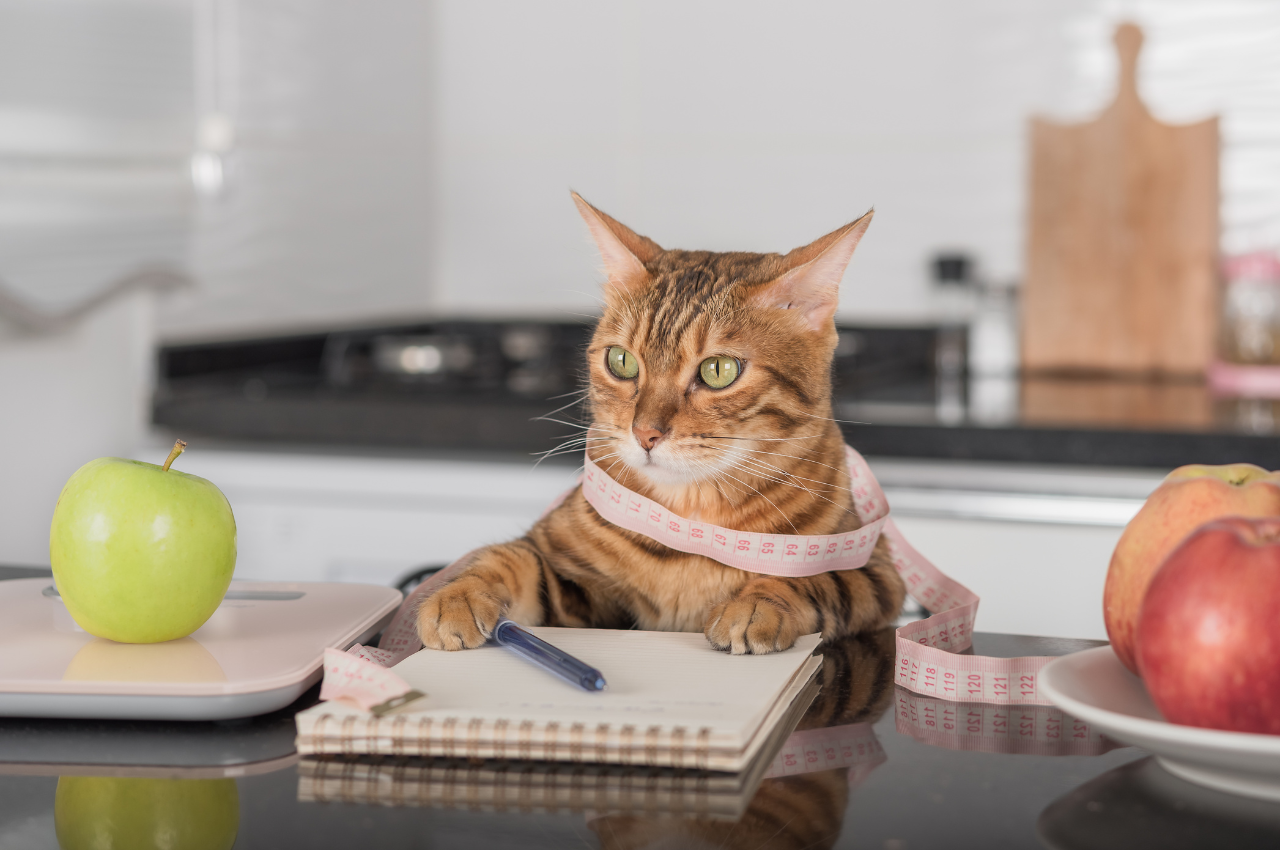To help your cat lose weight, you should determine the appropriate amount of food to give them based on their current weight, activity level, and the recommendation of a veterinarian or a feline nutritionist. Cats need a calorie deficit to shed pounds, but it’s crucial to provide the necessary nutrients for their overall health.
Therefore, it’s best to consult a professional to create a tailored weight loss plan for your feline friend. This ensures the correct portion size, balanced nutrition, and gradual weight reduction, promoting a sustainable and healthy weight loss journey for your cat.
Losing weight too quickly can lead to various health issues, so it’s important to proceed with caution and regularly monitor your cat’s progress.
Importance of Proper Nutrition for Cats
Ensure your cat’s weight loss success by providing the right amount of food to meet their nutritional needs. Portion control is key in managing your cat’s weight effectively, consult your vet for tailored advice on the ideal diet plan.

Cats, just like humans, require a balanced and nutritious diet to maintain optimal health. Providing your feline friend with proper nutrition plays a crucial role in their overall well-being. A well-balanced diet ensures that all essential nutrients are met, keeping them energetic, promoting a healthy weight, and preventing various health issues.
Essential Nutrients for Cats
Cats need a variety of essential nutrients to thrive. Here are some key nutrients that every cat should receive:
- Protein: Cats are obligate carnivores, meaning their bodies require animal protein to function properly. Protein supports muscle growth, tissue repair, and a healthy immune system. Include high-quality sources like meat, fish, and poultry in your cat’s diet.
- Fatty Acids: Omega-3 and omega-6 fatty acids are essential for a cat’s skin and coat health. These healthy fats can be found in fish oil and certain types of oil such as sunflower or safflower oil.
- Vitamins and Minerals: Cats need a range of vitamins and minerals, including vitamin A, vitamin D, calcium, phosphorus, and taurine. These nutrients support various bodily functions, including vision, bone health, and heart health.
- Water: Adequate hydration is essential for every cat. Ensure your cat has access to fresh, clean water at all times. Water helps with digestion, circulation, and temperature regulation.
Impact of Weight On Cat’s Health
Weight plays a significant role in a cat’s overall health and well-being. Obesity in cats can lead to a variety of health issues, including:
- Diabetes: Overweight cats are at a higher risk of developing diabetes due to insulin resistance.
- Joint Problems: Excess weight puts strain on a cat’s joints, increasing the risk of arthritis and other joint issues.
- Heart Disease: Obesity can lead to heart problems, including high blood pressure and heart disease.
- Reduced Lifespan: Cats that are overweight or obese tend to have shorter lifespans compared to cats that maintain a healthy weight.
Ensuring your cat achieves and maintains a healthy weight through a balanced diet is vital for their overall health and longevity. By providing the right amount of food and the right nutrients, you can help your cat achieve their weight loss goals while promoting a healthier and happier life.
Determining The Right Portion Size for Weight Loss
When it comes to helping your cat lose weight, one of the most important factors to consider is the portion size of their meals. Just like humans, cats require a specific amount of calories each day to maintain a healthy weight. By consulting a veterinarian and calculating your cat’s daily caloric needs, you can determine the right portion size to aid in their weight loss journey.
Consulting A Veterinarian
Before making any adjustments to your cat’s diet, it is essential to consult a veterinarian. They will be able to assess your cat’s overall health and create a tailored weight loss plan. A veterinarian can also provide valuable insights into any specific dietary requirements or medical conditions that may impact your cat’s weight loss goals.

Calculating Daily Caloric Needs
Calculating your cat’s daily caloric needs involves understanding their current weight, ideal weight, and activity level. While each cat is unique, a general guideline is to provide 20 calories per pound of body weight for weight loss. However, it is important to note that the caloric requirement may vary depending on factors such as age, breed, and metabolism.
Here’s a simple formula to calculate your cat’s daily caloric needs:
- Weigh your cat accurately using a pet scale.
- Consult your veterinarian for the ideal weight for your cat’s breed and body type.
- Subtract the ideal weight from the actual weight to determine the excess weight.
- Multiply the excess weight by 20 to estimate the daily caloric needs for weight loss.
For example, if your cat weighs 12 pounds and the ideal weight is 10 pounds, the excess weight is 2 pounds. Multiplying 2 pounds by 20 gives a result of 40 calories per day.
Ensuring The Right Portion Size
Once you have calculated your cat’s daily caloric needs, it’s time to ensure the right portion size to achieve weight loss. A common mistake is using the recommended feeding guidelines printed on the cat food packaging. These guidelines are often based on the average caloric needs of a non-overweight cat and may not be suitable for weight loss.
To determine the appropriate portion size for your cat, you can divide the total daily caloric needs by the number of meals you feed them. For example, if your cat needs 40 calories per day, and you feed them twice a day, each meal should consist of about 20 calories.
Remember to monitor your cat’s progress and adjust the portion size accordingly. Gradual weight loss is recommended, aiming for around 1-2% reduction in body weight per week. Regular check-ups with your veterinarian can help ensure your cat’s weight loss plan is on track.
Monitoring Your Cat’s Progress
Monitoring your cat’s progress is essential in ensuring that they are effectively losing weight while maintaining their health. By keeping track of weight changes and adjusting food portions accordingly, you can help your cat reach their weight loss goals safely and sustainably.
Tracking Weight Changes
Start by weighing your cat regularly, ideally every week, to monitor their progress. Keep a record of their weight in a notebook or a spreadsheet, noting any fluctuations or trends over time.
Adjusting Food Portions Accordingly
Based on your cat’s weight changes, review their current food portions and consult with your veterinarian to determine if any adjustments are necessary. It’s important to gradually make changes to their diet to prevent any digestive issues.
Common Mistakes to Avoid
When it comes to helping your cat lose weight, it’s crucial to avoid common mistakes that may hinder their progress. Understanding and steering clear of these pitfalls can make a significant difference in your feline friend’s weight loss journey.
Overfeeding Out of Guilt
Many pet owners fall into the trap of overfeeding their cats as a way to show love or ease guilt. However, this can have detrimental effects on their weight management. It’s crucial to resist the temptation to overfeed your cat, as this can lead to excessive calorie intake and hinder their weight loss efforts.
Inconsistency in Feeding Routines
Inconsistency in feeding schedules can disrupt your cat’s weight loss journey. It’s important to establish a consistent feeding routine, ensuring that the portions are measured and given at the same times each day. This helps regulate their metabolism and prevents overeating.

Conclusion
When assisting your cat in losing weight, remember to feed in moderation. Consistency is key to their health journey. Adjust portions gradually and consult your vet for personalized advice. Prioritize quality over quantity in their diet for sustainable results.
Keep monitoring progress and staying patient throughout the process.
